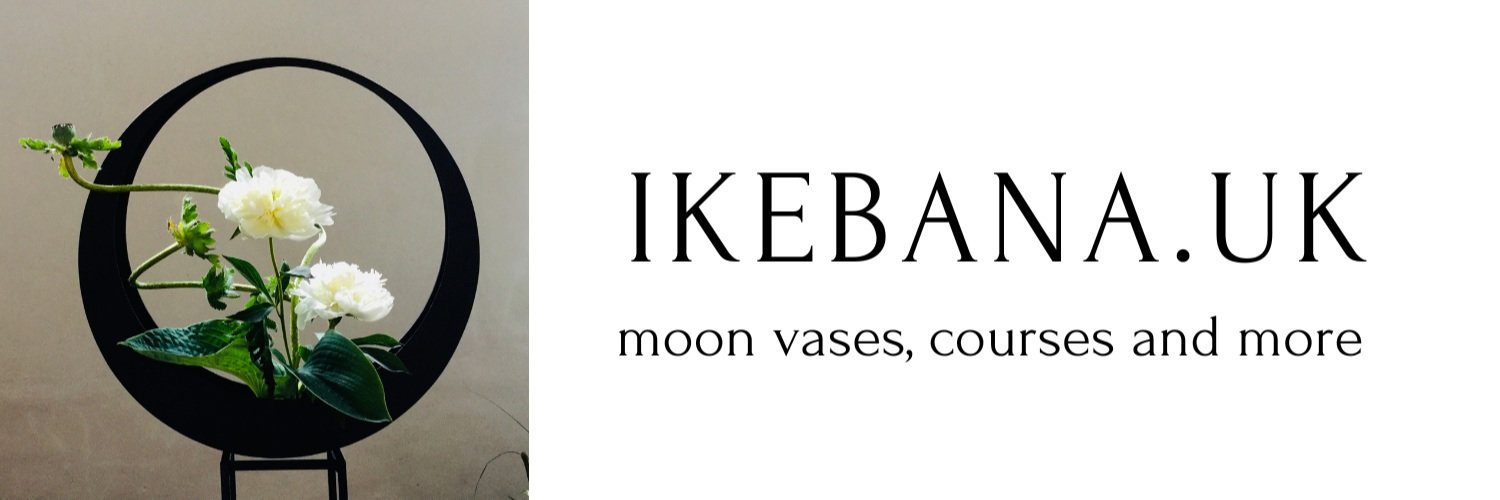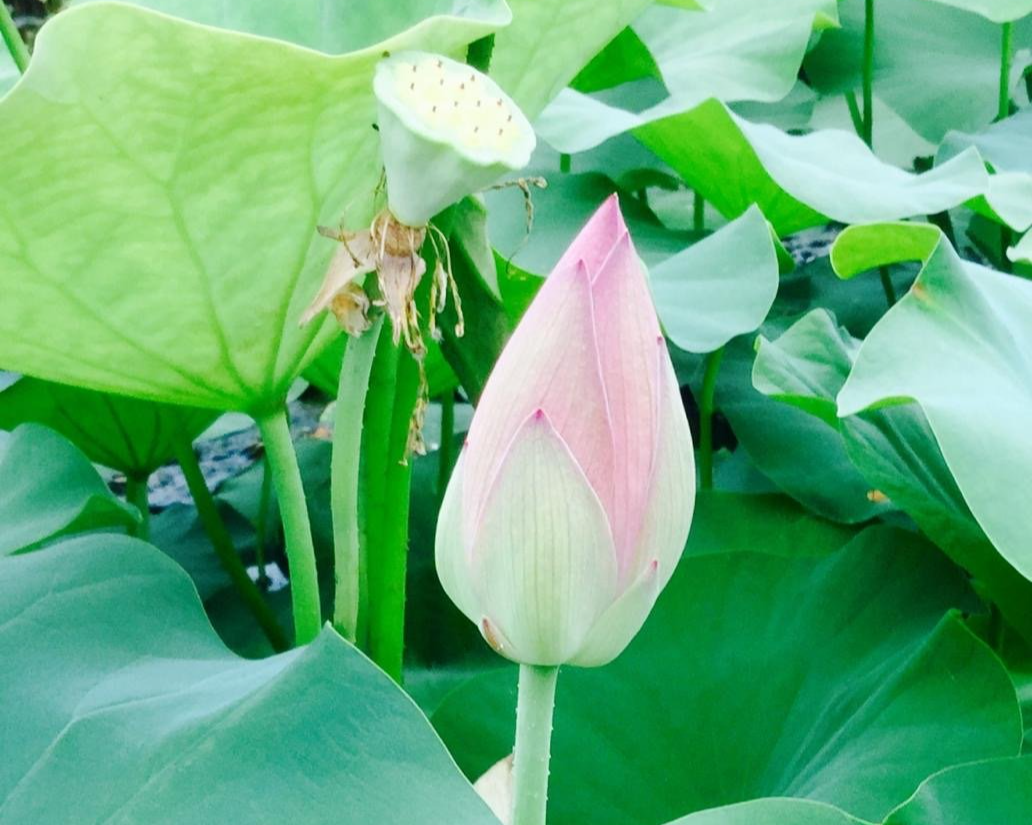AUGUST - Japanese Flower Calendar
The Lotus is a stunning water plant of amazing beauty, The National flower of India (nelumbo nucifera, family name Nelumbonaceae) and is also found all over Asia.
When we were in India we were lucky enough to see these beautiful plants flowering in the wild on a lake at Shahpura Bagh, with their huge flat leaves acting as landing pads, for delicate birds they were flowering in the hottest part of the year and just before the start of the monsoon season. We were told that they flower when the water level drops and these gorgeous flowers can make their way up to a height of 30 to 90 cms through the mud and sludge to 'pop' open and show their amazing beauty at dawn. It is said being quiet by the lake at dawn you can hear the the bud pop open and then watch the perfect pale pink blossom unfurl into the sun. Once open the sun controls the opening and closing of the flower and as the afternoon progresses the flower head closes until the next sun rise.
Mystical and beautiful the Lotus is a divine flower growing out of mud and filth to be the sacred flower of the Buddhist faith, a symbol for continued renewal and victory after strife. A sign that however awful things are like the lotus flower we can rise up out of the mud and filth of despair into the bright sunlight of hope, this symbolism gives huge spiritual significance to the Lotus in Buddhism. This symbolism dates back thousands of years, and nothing is more revered in the Buddhist faith than the lotus.
Beds of Lotus flowers are found in lakes near Buddhist temples and large sculptures of the whole plant, leaves and flowers are displayed in the Buddhist temples. The big temple Todai-hi at Nara in Japan has a large sculpture of a lotus plant, with flowers and leaves, set at the side of a huge bronze sculpture of Buddha, famous the world over and a World Heritage Site.
Other faiths and cultures also have the lotus flower as their symbolic flower and this includes the religion of Hinduism where it is an important symbol of purity and beauty. Indians believe that Brahma the God of the universe and the great creator sprang forth from a lotus flower.
Very important in Chinese and Egyptian cultures lotus flowers can be found in religist buildings and shrines, in decorative art and architecture, in palaces and there are sculptures all over Asia.
There are many fables and myths surrounding the lotus flower
THE FLOWER SERMON. A story of the origin of Zen Bhuddhism
This is a sermon where no words were spoken the Buddha held up a white flower, said to be a lotus, in total silence. Only one person understood the significance of this and he smiled, his smile was the transfer of his wisdom and understanding to the Buddha.
The whole meaning of life, of purity and devotion and the challenges of life were represented in that lotus flower and this is said to be the origin of Zen Buddhism.
A Buddhist thought, "If thou be born in a poor mans hovel but have wisdom then thou art like the Lotus flower growing out of the mud"
THE STORY OF THE WICKED BUDDHIST PRIESTS
In ancient times Buddhists believed that to sit in the Lotus Throne meant to be reborn in Paradise after death.
Way back in the Edo period of Japanese history a wicked group of Buddhist priests decided to make money out of this belief.
Anyone wealthy, for a fee,was allowed to sit in the centre of a giant man made Lotus flower, it was made from wood and paper.
A special Buddhist ceremony was held and at the end of the ceremony the giant flower closed, at the end of the service the flower was opened and the wealthy participant was seen to be dead.
The wish to sit in the Lotus throne had been achieved and their death had achieved the wish to be reborn in Paradise The family of the person paid the priests as the final wish had been granted. The donation to the temple was usually large!
The Lotus is also edible, the tubers are harvested from deep in the mud of the lotus pond they can be served sweetened or crisply fried in batter as tempura, another way is thinly sliced and eaten with cream cheese and thin white bread, delicious all ways. The leaves are even used as a cooking vessel and aromatic rice is rolled in them and steamed, the leaves are totally water proof and allow the rice to cook. In the long and distant past Japanese castles grew Lotus in their moats as emergency food in the case of a siege.
The dried stamens of the lotus flowers are also used in the preparation of an aromatic tea.
Arrangements with lotus flowers and leaves are very difficult to achieve mainly because the leaves and flowers of the lotus have to be carefully conditioned before they can be used. Unconditioned lotus leaves will wilt within 30 minutes of being cut from the plant.
When the leaves are first cut they must be turned upside down and using a special water pump pond water is forced down the stem until you can see the water go into the veins of the leaves and water comes out of the leaf surface, the leaf is then quickly put into a bucket of water. (In Asia a thread is tied just above the cut to keep the water in the stem)the result is a turgid leaf that looks as though it is still growing in the pond.
The same technique is used to condition water lily leaves for use in arrangements. The stems of both these leaves have several hollow channels that allow the water to go in fairly easily with the pressure from the pump.
It is important when doing traditional lotus arrangements to remember that flower buds and curled leaves represent the future, open leaves and flowers the present and finally dead leaves and seed heads the past.
The seed of the lotus can exist for thousands years and lotus plants and flowers have been grown from seeds hundreds of years old when the conditions are right.
The Lotus is a truly amazing plant mystical and sacred, beautiful to look at and has practical uses as food and tea to drink. I will always treasure the sight of the wild lotus growing in the lake at Shahpura Bagh and I keep going back to my photographs to gaze at the pictures and remember my excitement at such an unexpected view.


